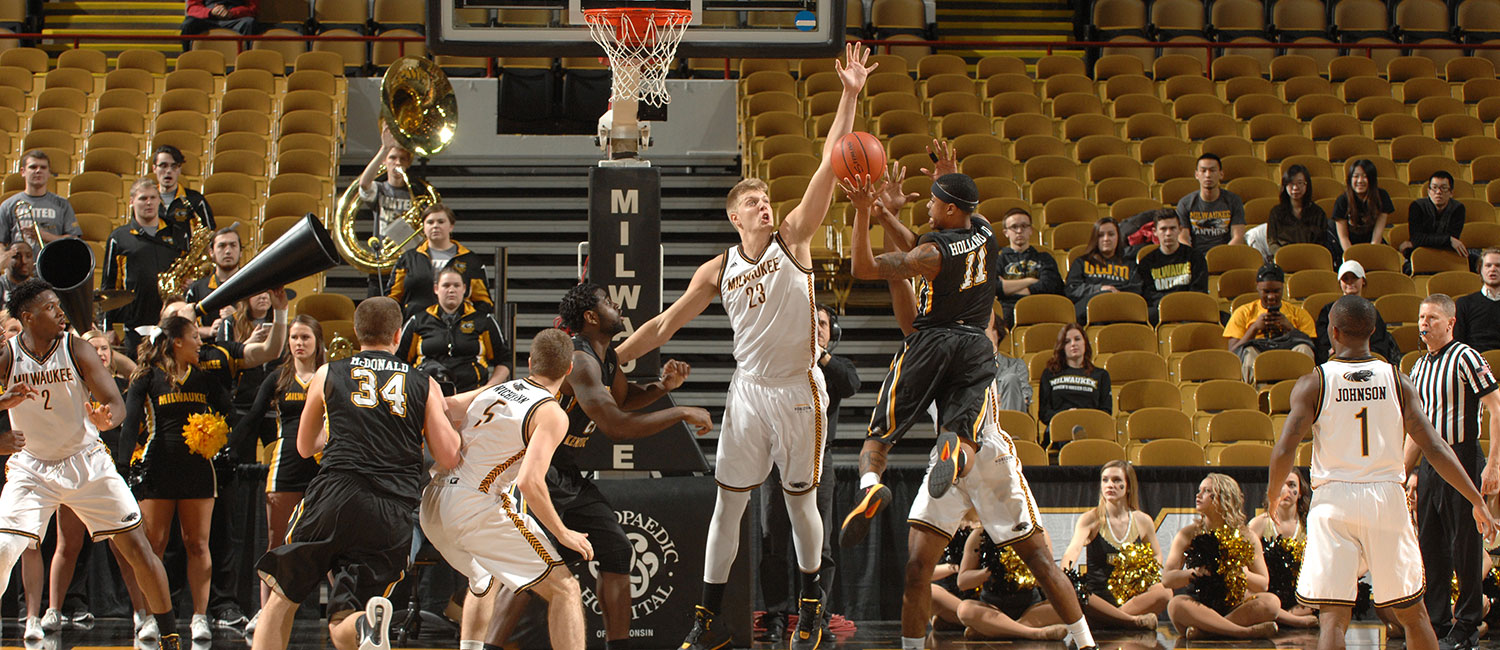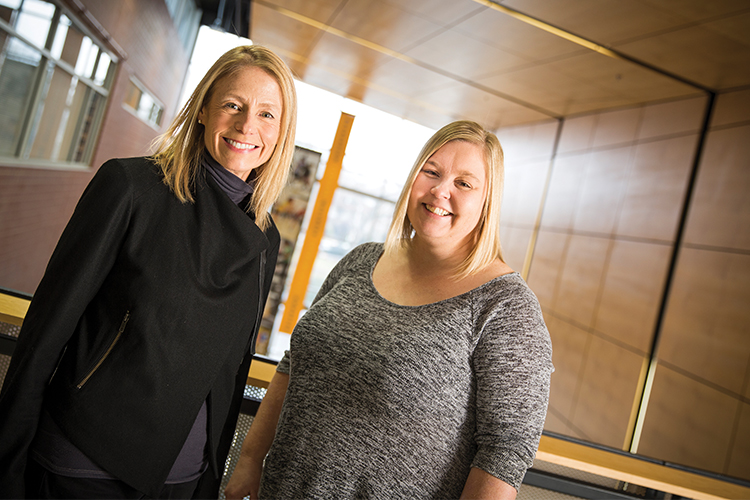
Right State of Mind
How UWM sport psychology experts help athletes achieve peak performance.
Consider the Olympic skier poised at the top of the mountain. Or the college basketball player at the free-throw line. Even the preteen swimmer waiting for that race-starting dive.
What happens next depends not only on their athleticism and physical training, but also on their mental preparation. One group of UWM researchers excels at helping performers of every ability develop a mindset for success.
“We conceptualize performance on a continuum,” says professor and sport psychology consultant Barbara Meyer, “from the person with rheumatoid arthritis who wants to garden, to tactical athletes such as police officers and firefighters, to elite-level sport athletes.”
Meyer is director of UWM’s Laboratory for Sport Psychology and Performance Excellence, or LSPPE. She and her colleagues research and apply proven psychological strategies to help people optimize performance, prevent injuries and make quicker comebacks if they are injured.
Meyer has an international reputation for helping top athletes succeed. Since 2001, she’s consulted with Olympic medalists and world champions, be they Australian and Canadian skiers or hockey players from the United States and Canada. She provides strategies to overcome a variety of mental obstacles, including one that’s among the most common: fear of failure.
“People say, ‘You have two Olympic medals! What are you afraid of?’” Meyer explains. “But the athletes worry that they can’t maintain the same level of performance. They say, ‘What if I can’t repeat this?’”
She helps them do just that, and the LSPPE conducts research to stay at the cutting-edge of the sport psychology field. One recent line of research examined the use of mental skills during injury rehabilitation. Another sought to better understand an athlete’s readiness for psychological skills training.

The LSPPE also collaborated with UWM’s Human Performance & Sport Physiology Laboratory to examine firefighter recruit training programs. That project’s goal of decreasing injuries would save municipalities millions of dollars in health care costs.
Much of the LSPPE’s research focuses on the results of collaborative work among athletes, coaches and sport psychology consultants. Such interdisciplinary approaches have been shown to speed an athlete’s injury rehabilitation, while also improving their performances, as graduate student Courtney Hess discovered while studying an injured skier at the 2014 Olympics.
But LSPPE consultations aren’t just for Olympians. UWM’s own athletes benefit, too.
JJ Panoske, a former UWM men’s basketball player, took a sport psychology course with assistant professor Monna Arvinen-Barrow and later asked to meet one-on-one for consultations. The 6-foot-10 forward felt he had the physical skills, the height and the potential to succeed on the court, but suspected his mental skills were holding him back.
His hunch was right. “I realized I was always worrying about the game that was coming up,” Panoske says, “or if I’d made a bad play in the last game.”
Arvinen-Barrow, a British Psychological Society chartered psychologist, works with athletes across many ages and competition levels. She says they often worry about the past or future instead of staying focused in the present. Performers also may struggle to regulate their intensity or dial back the stress response – pounding heart, fast breathing – in key moments.
So Arvinen-Barrow worked with Panoske to develop breathing techniques he could use during game breaks. He saw immediate improvement. “In a month, I was averaging about six points more a game and maybe five rebounds more a game,” he says. “It just was a night-and-day difference.” Without it, Panoske says he never could’ve turned pro and played for the NBA Development League’s Maine Red Claws.
Altering an athlete’s thinking takes time. Meyer and Arvinen-Barrow usually begin with in-depth consultations, sometimes conducted via Skype or FaceTime, because athletes are often in other countries. “We do a lot of listening,” Arvinen-Barrow says.
After that initial work, as clients near their competitions or performances, the interactions shift. “We may have a session at the bottom of the ski hill for two minutes,” Meyer says. “When we’re in competition mode, we don’t want to have a lot of conversation. We’re reinforcing their productive psychological and physical habits, helping them to stay out of their own way.”
It sounds simple, but sport psychology is anything but an easy fix. “People think this is the secret sauce, the magic pill, the silver bullet,” Meyer says. The reality is that it takes work to be effective.
But Meyer and Arvinen-Barrow stress that with such work, most people can develop the right mindset for success. “You can become more confident. You can learn to concentrate better. You can become more resilient,” Meyer says. “Just like we can change the capacity of our muscles, neuroscience research shows we can change the capacity of our brains.”